Women, Wind and Plastic
This is a story of courage and resilience
BY Pat Bradford
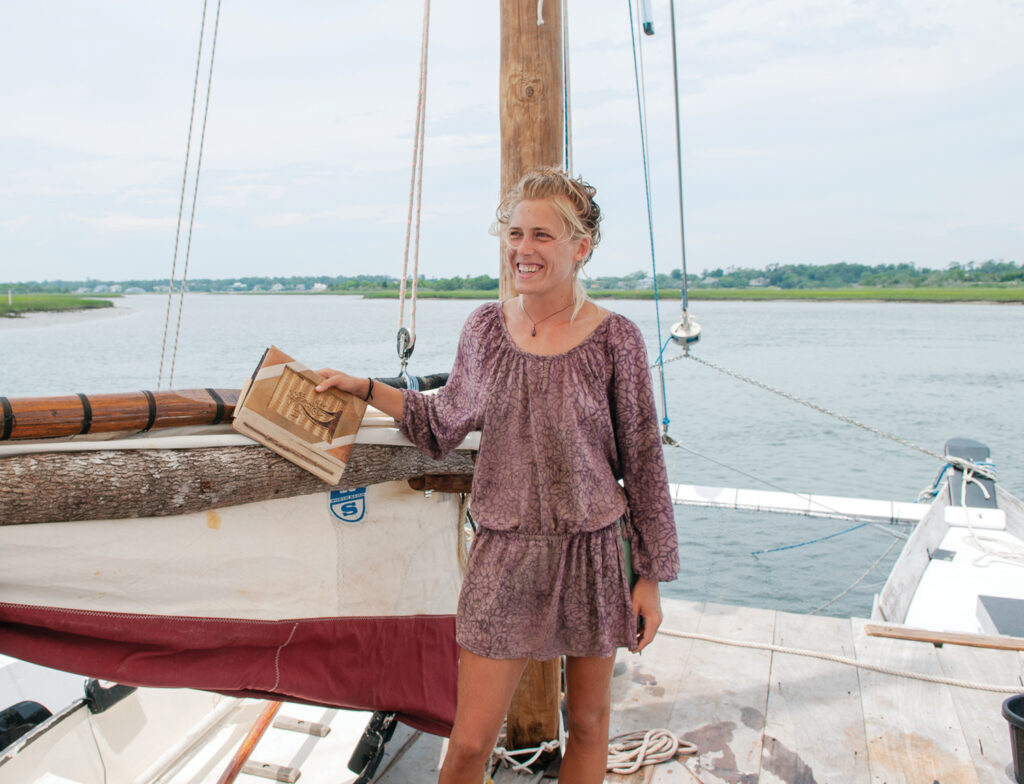
Once upon a time there was a beautiful young woman named Kiana. She was living in Bocas del Toro, Panama, aboard a 75-foot Polynesian catamaran when she fell in love. It was not your ordinary kind of love. This was between the girl and a boat, the Mara Noka, age 50.
It may have been a match made in heaven.
It was 2017. Kiana Weltzien, then a 21-year-old former Miami real estate professional, purchased the aging Mara Noka the following year over the phone from California and flew to Central America to take possession. Thus began the journey from nomad girl with zero sailing skills to a seasoned captain of her own vessel and course. She now has more than 11,000 nautical miles behind her, including multiple ocean crossings, a number of them solo.
Kiana and Mara Noka had spent most of 2021 and the first quarter of 2022 in a St. Augustine, Florida boatyard, hauled out of the water (on the hard) making significant repairs to the twin plywood hulls, which had a nylon and tar coating. It was a major restoration, including stripping much of the boat down to bare wood, replacing rot, rebuilding a bulkhead, reglassing and painting hulls and the bottom, and installing a new boom.
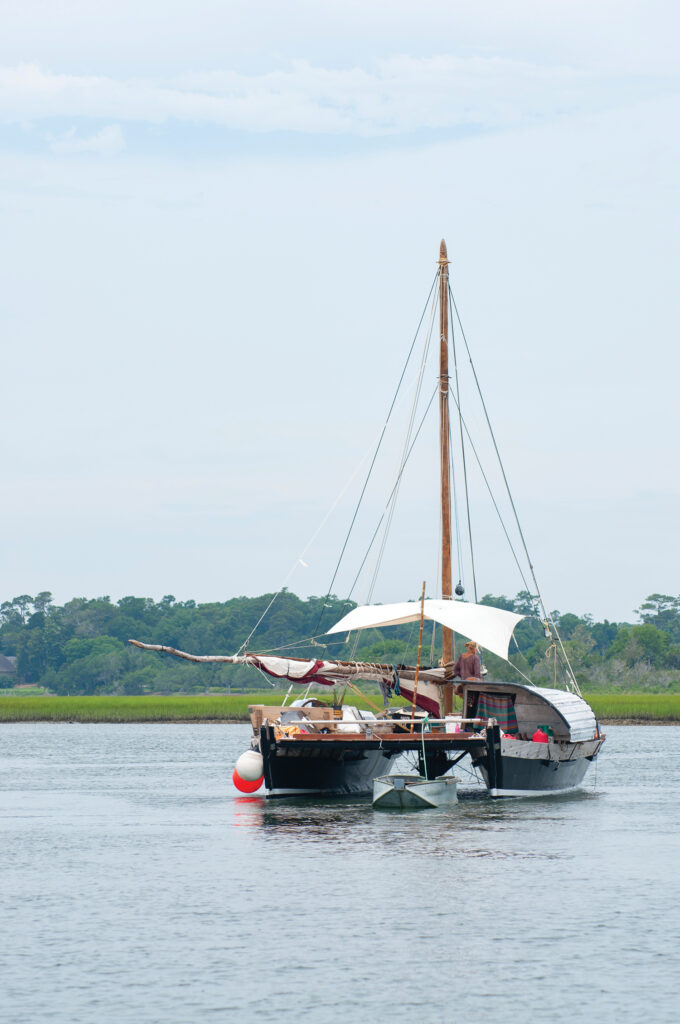
Photo by Allison Potter
Kiana had tackled the work herself. Four months in she was joined by her friend Lærke Heilmann, a surfer, sailor, artist and environmentalist who arrived from the Canary Islands to go sailing.
“We thought we were going sailing in two weeks, and we kept thinking that — two weeks, and we’d tell people, two weeks,” Lærke says.
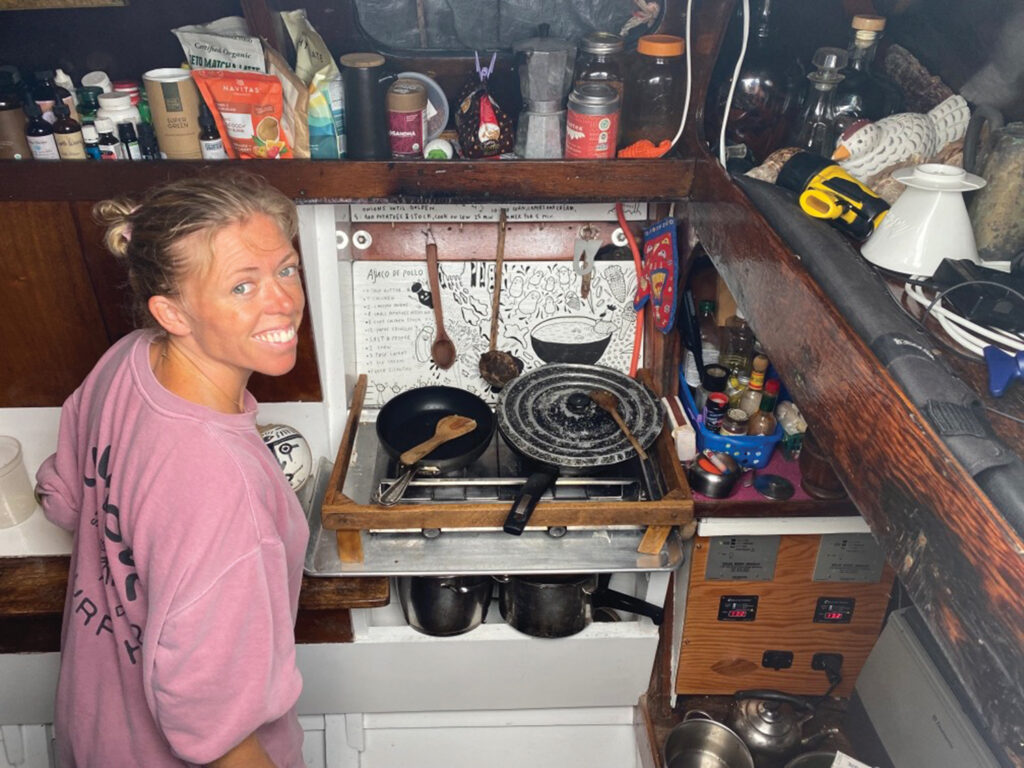
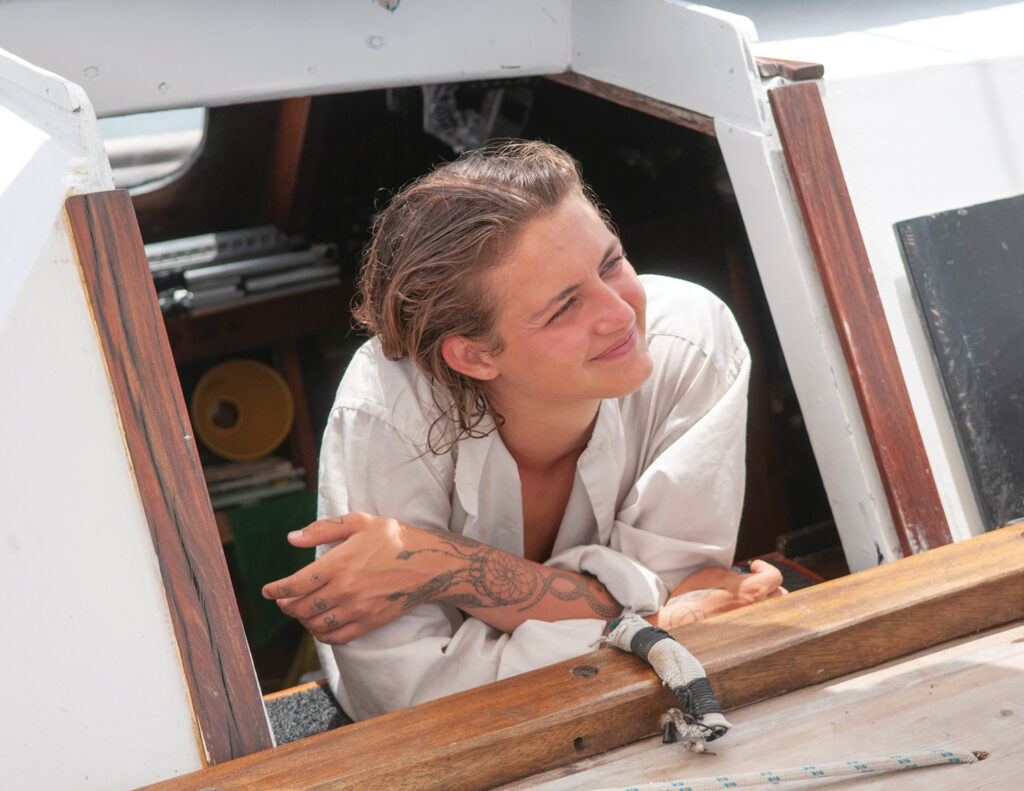
It would be closer to a year.
Kiana was not a stranger to historic St. Augustine, having attended Flagler College in 2013.
With no previous land or marine construction skills, Kiana learned as she went during the 14 months and 7 days the boat was out of the water.
The extremely challenging work was tempered by time with her grandmother. Kiana grew up in Brazil, but now her mother and sister live in St. Petersburg and her grandmother lives in St. Augustine.
“I got to see her every day,” says Kiana.
Relaunched April 25, 2022, the Mara Noka with Kiana and Lærke aboard headed north, arriving May 28 in Masonboro Inlet. Kiana had previously driven to Wrightsville Beach while the boat was in the St. Augustine boatyard.
Alizé Jireh, a 22-year-old photographer and documentary filmmaker from the Dominican Republic whose work has taken her around the world, joined the boat in Wrightsville Beach in June. She has never sailed, but says she has dreamed of sailing the ocean since she was a young child.
Post-holiday, Mara Noka could be found anchored off the spoil island south of Seapath Towers, finalizing provisioning for another transatlantic voyage, this one with a cause.
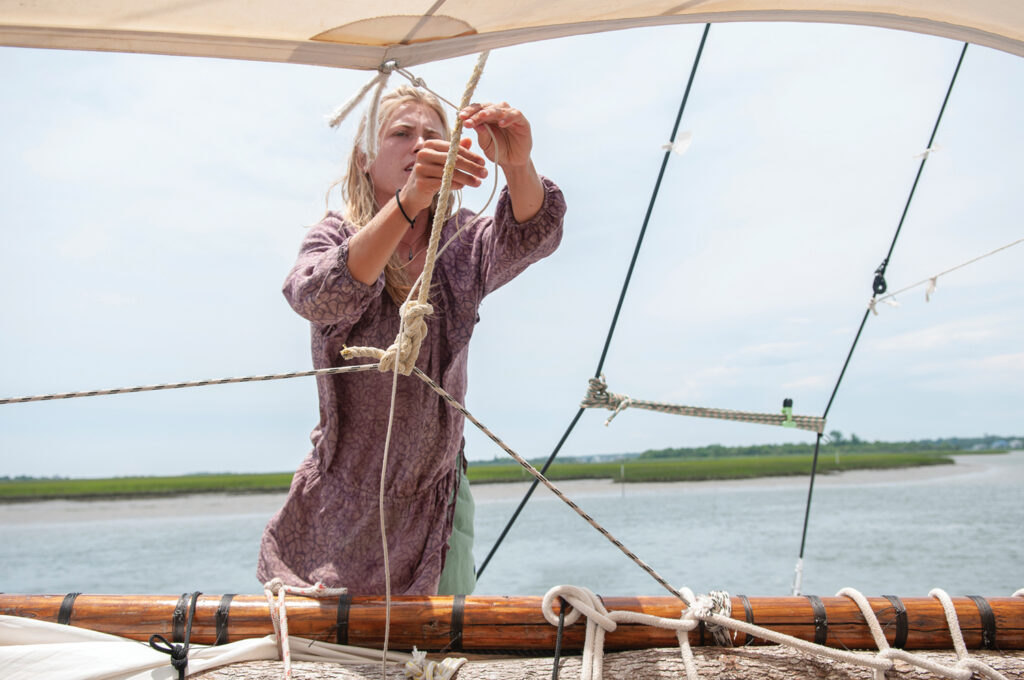
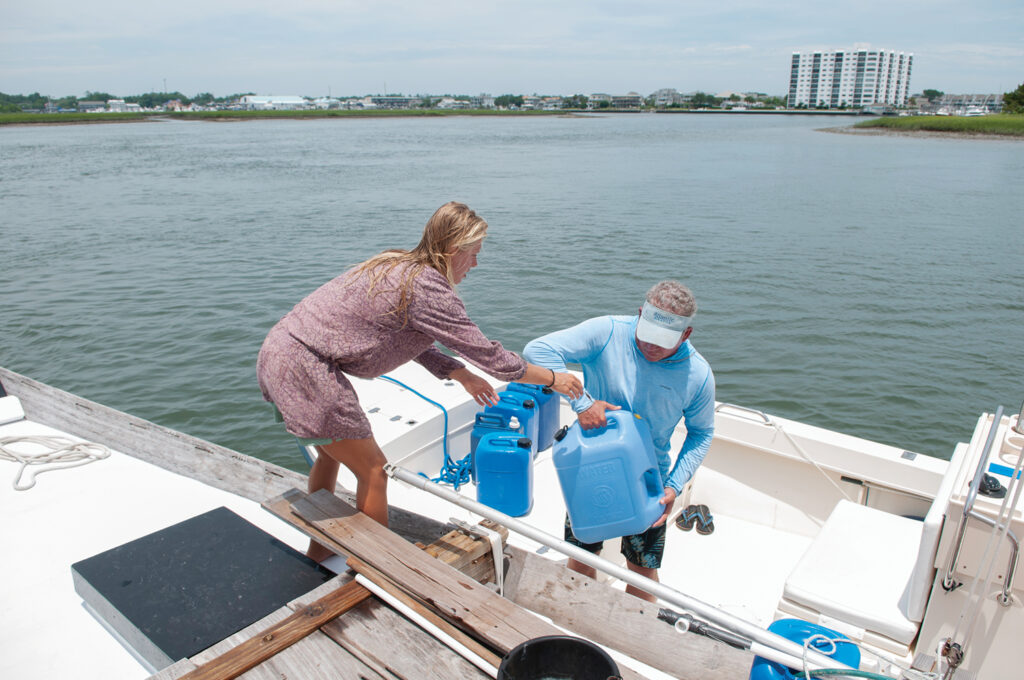
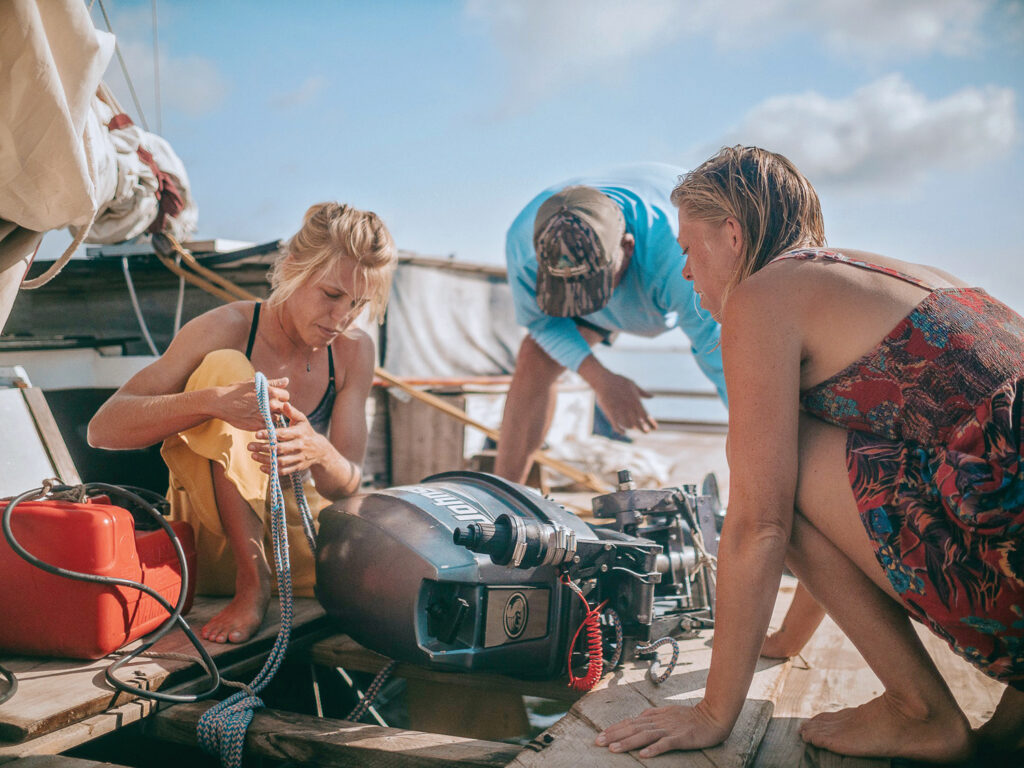
Lærke, 36, developed a passion for the ocean while growing up sailing around Denmark. Now based in Fuerteventura in the Canary Islands, she is project coordinator for the Clean Ocean Project, a nongovernmental organization founded in 2002 to fight plastic pollution and to protect the ocean.
During their time in Wrightsville Beach, the women were named the first international ambassadors for masonboro.org, the citizen organization dedicated to the protection of Masonboro Island.
“Theirs is an authentic story, the same as masonboro.org’s,” says Tom Hackler, the organization’s president. “I think we have a shared mission statement to some degree, protecting the ocean, the coast. Without the ocean, what’s Masonboro Island going to be?”
The women are united in their quest to expose the quantity of the plastic in the world’s oceans and the damage it is doing to the planet. They want to document what happens to far too much plastic and how some recycling is not actually recycled.
“When we met, we talked about sailing together and we decided to really raise awareness of plastic,” says Kiana. “Crossing the Atlantic, there’s lots of plastic floating, single-use plastic, even things like Crocs.”
The Canary Islands, a Spanish archipelago in the Atlantic Ocean 100 miles northwest of Africa, collect plastic.
“In the Canary Islands it’s microplastics; high tide is marked by this microplastic blue line,” Kiana says.
Microplastics are pieces of plastic debris less than 5 mm in length, resulting from the breakdown of consumer products as well as industrial waste. Much of it makes its way into the oceans, where it can be ingested by a wide range of fish species from small to large. Plastic ingestion by fish we eat is a growing problem.
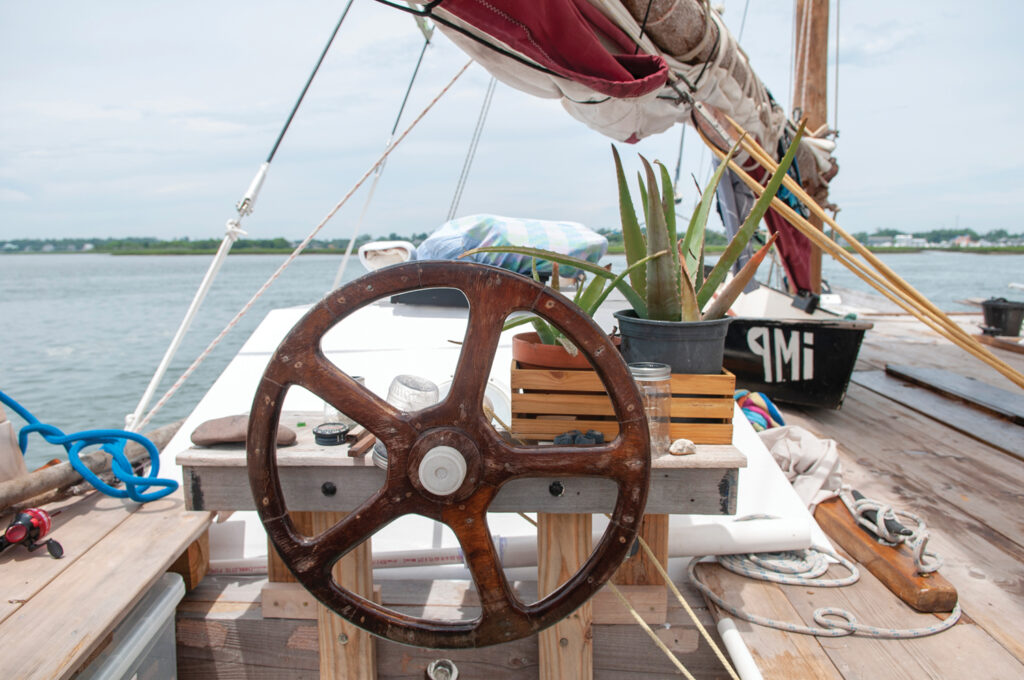

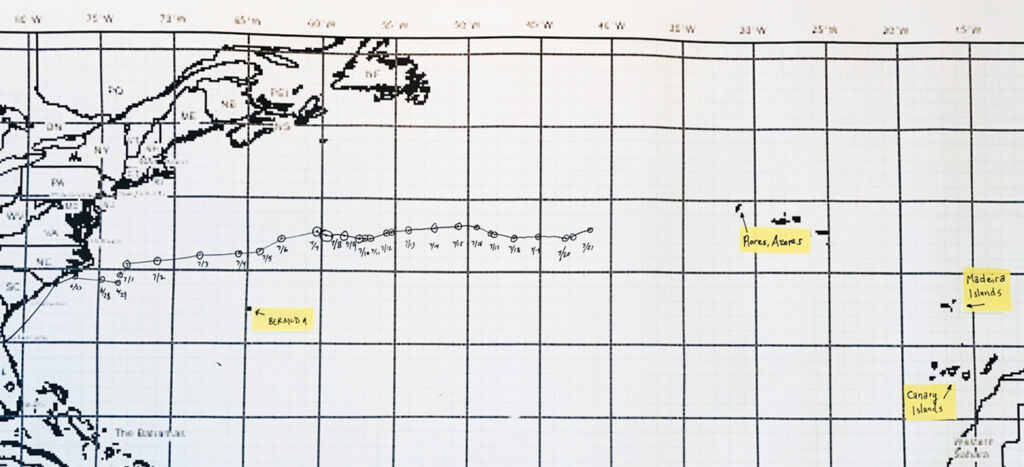
Mara Noka log July 21, 2022
“In the vastness of the ocean — a thousand miles from shore — so far from human activity you see plastic floating,” Lærke says. “There’s no beach in the world where you will not see plastic.”
While anchored in Wrightsville, Lærke and Alizé spent a few of their last hours with Hackler aboard his boat, learning how to fish, while listening to Pavarotti. John Murchison donated some of his own fishing equipment and some he purchased from Intracoastal Angler.
Fresh fish will be a welcome addition to their diet.
“I want to catch my first tuna,” says Kiana. “I have caught one fish trolling; it was so little I had to let it go.”
The unusual look of the catamaran garnered quite a bit of attention. While the others were out fishing, a passing boat shared its fresh catch with Kiana.
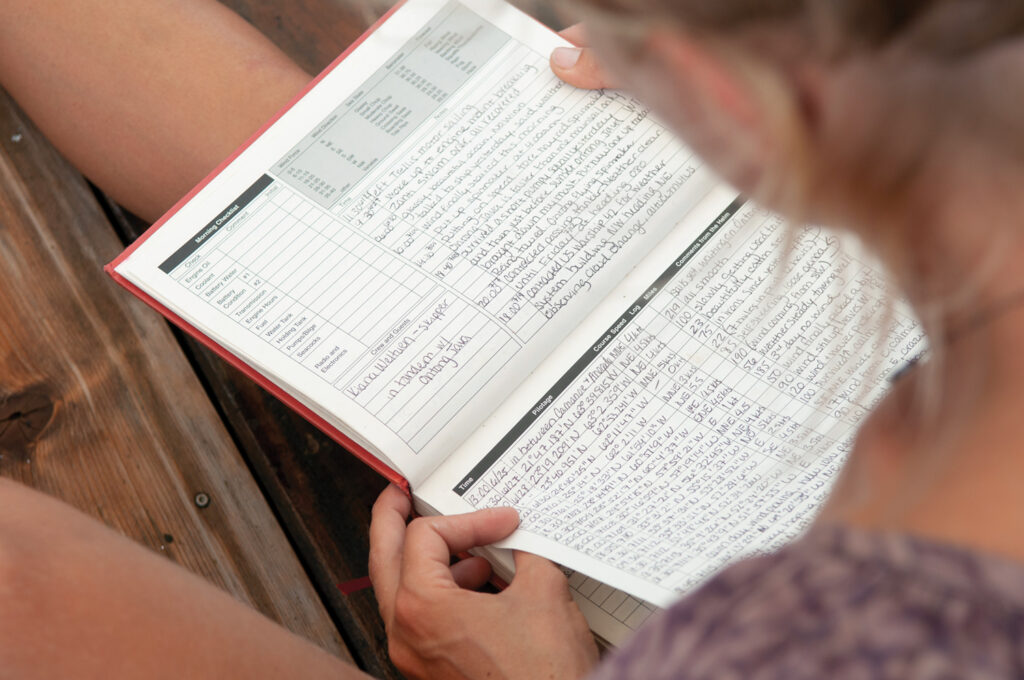
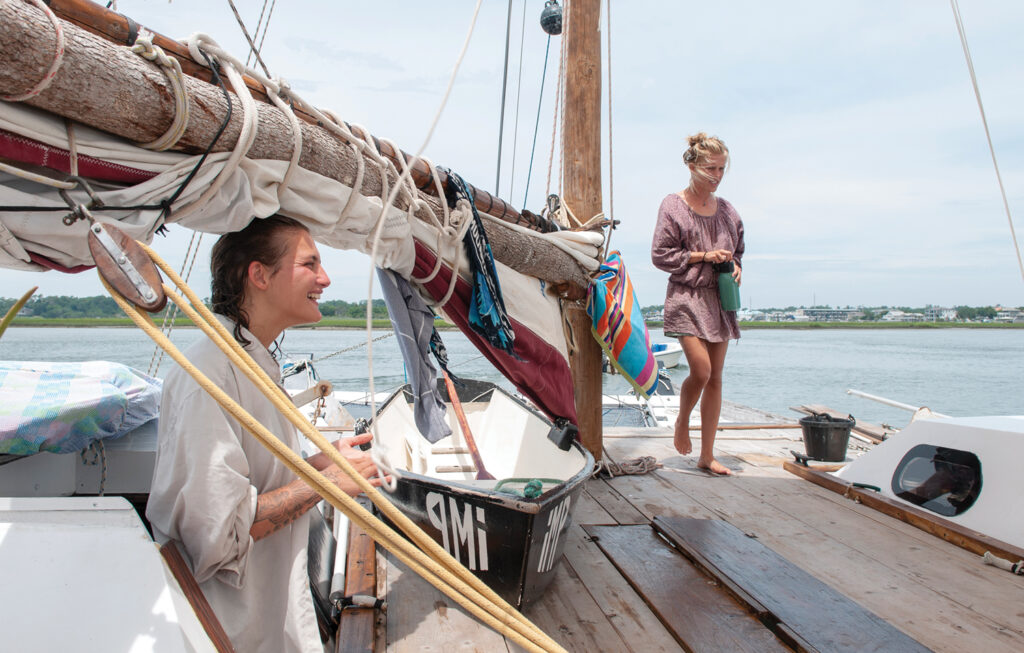
Kiana learned to sail by sailing in tandem with her mentor, a shipbuilder and wanderer whose boat she was living aboard when she first saw the Mara Noka.
“We did quite a few tandem sails, all the way from the Dominican Republic to Portugal,” Kiana says.
In 2020 she documented her first solo east-to-west transatlantic sail from the Canary Islands to Guadeloupe and posted it on her YouTube channel, which has some 1,600 subscribers.
Her advice: “Just go do whatever it is you’re thinking about that you want to do. Just go do it.”
The Mara Noka is a Wharram Narai, built in Whitby, England, in 1974. It is believed to be the oldest plywood catamaran still sailing. She is a classic, primitive design by James Wharram, said to be the founder of the modern catamaran.
A Wharram was the first to sail west to east across the Atlantic. The boat is meant to be lashed together, not screwed and bolted, allowing for flexibility.
The Mara Noka is outfitted with a Portuguese telephone pole mast, a hand-carved gaff spar, and a 33-foot tree branch for a boom. Her sails are a Gunter sail rig, a form of a gaff rig, and a roller furling genoa and a hank-on steering sail. The gaff goes up parallel to the mast, becoming an extension of the mast. The bridge deck between the hulls is covered with wide, thick planks, providing firm footing.
Cooking can be below deck on a propane two-burner stove, or on deck over an iron firepit with grill. The electrical is a combination of two solar collectors that can pull in 260 watts and a 160-amp battery bank to run the refrigerator and charge phones as well as a 2,000-watt Yamaha generator.
“I used to not have tools, now I have all the tools I could dream of,” Kiana says.
On June 22, 2022, with light wind, the women moved the boat to Beaufort, N.C., as they waited on the wind.
“We’re going to Portugal. I’m going to aim east/southeast, and go south of Bermuda. I don’t like how the storms roll off of Bermuda. Once we are past Bermuda, we’ll be good,” says Kiana.
The Mara Noka spent almost a week in Beaufort, waiting for favorable wind before finally setting sail on June 28. On day one the women logged 91 nautical miles. By Day 3 the boat was 254 miles out, off Nags Head as the wind finally picked up. The message from the boat that day was “for the past two and a half days we have had no wind, but our fair share of birds, sunshine, and TOO MUCH plastic, and two dolphins.”
On July 3, Day 7, they sailed 138.4 nautical miles.
On July 12, Day 16 with a wind of 24 knots and wave height of 3.7 meters, a low pressure that had been making life wet and uncomfortable began passing them to the northeast. It had been a tough week.
The 3,767-mile Transatlantic passage was expected to take 29 days.
Q&A with Kiana Weltzien
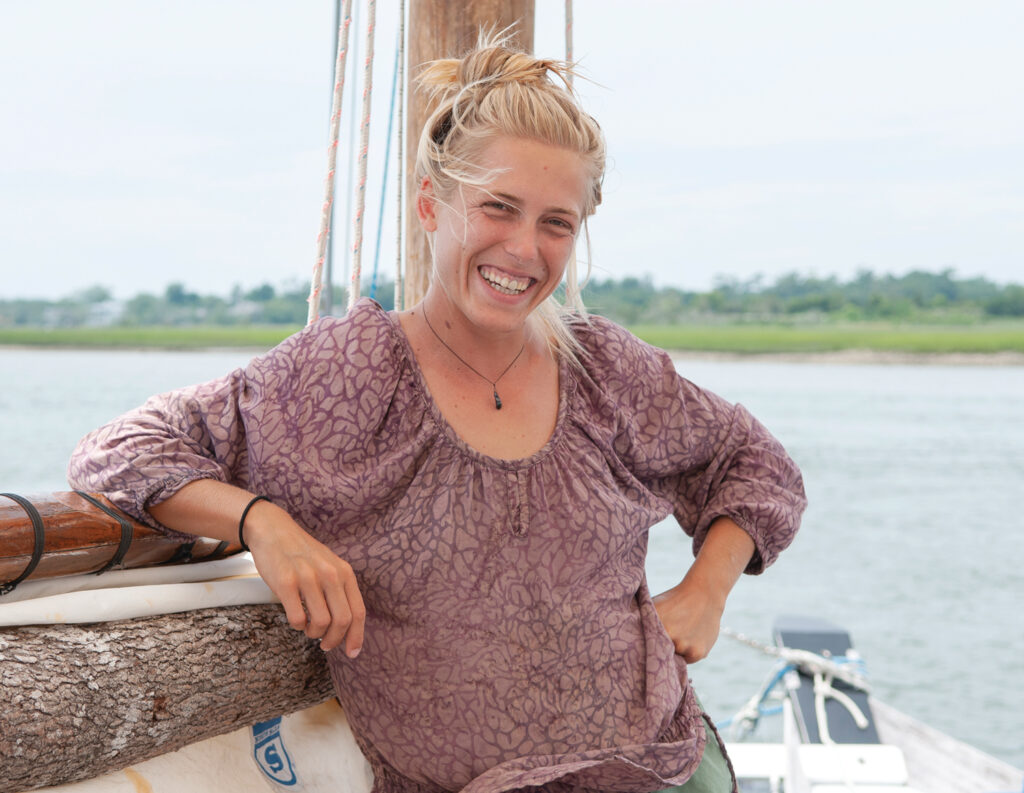
WBM: How long have you been sailing?
KW: Since 2018.
WBM: When doing a solo crossing, when do you sleep?
KW: If I am near shore or in a shipping lane, I sleep between 10 and 30 minutes, then I sit up and I just look around. That look around can take 30 seconds to a minute and then I am back asleep. I set an alarm, but I always wake up before the alarm goes off. Out at sea when I’m not worried about any shipping, I’ll sleep two hours at the most [under sail].
WBM: Describe the sequence of the places you have sailed.
KW: Panama to Colombia, north to Haiti, east across the north coast of Hispaniola, to the Dominican Republic to the British Virgin Islands, then to the Azores [an archipelago 1,000 miles west of mainland Portugal]. After the Azores to the mainland of Portugal, the Algarve on the south coast of Portugal. From there to Morocco. I left Morocco on Christmas Day 2019, sailing to the Canary Islands. That’s where I met Lærke, on Fuerteventura.
Then it was the Covid lockdown, under the Spanish military. You were not allowed in the water to check your anchors, they had drones flying around, people were not allowed in their swimming pools, it was very extreme. I decided to sail across [22 days] the end of April, arriving at Guadeloupe [part of the Leeward Islands in the Northern Lesser Antilles chain in the eastern Caribbean Sea] the end of May.
I had no idea what was going on in the world, I was just half expecting World War 3 to be going on. I stayed there from May until October 2020, then I needed to get to the U.S. I sailed Guadeloupe to the British Virgin Islands and rested there for one night. I did offshore the Bahamas straight to St. Augustine. It was still hurricane season. I was 200 miles east of the Bahamas, I don’t want much drift room between me and the reefs.
WBM: What languages do you speak?
KW: English, Portuguese, Spanish and French.
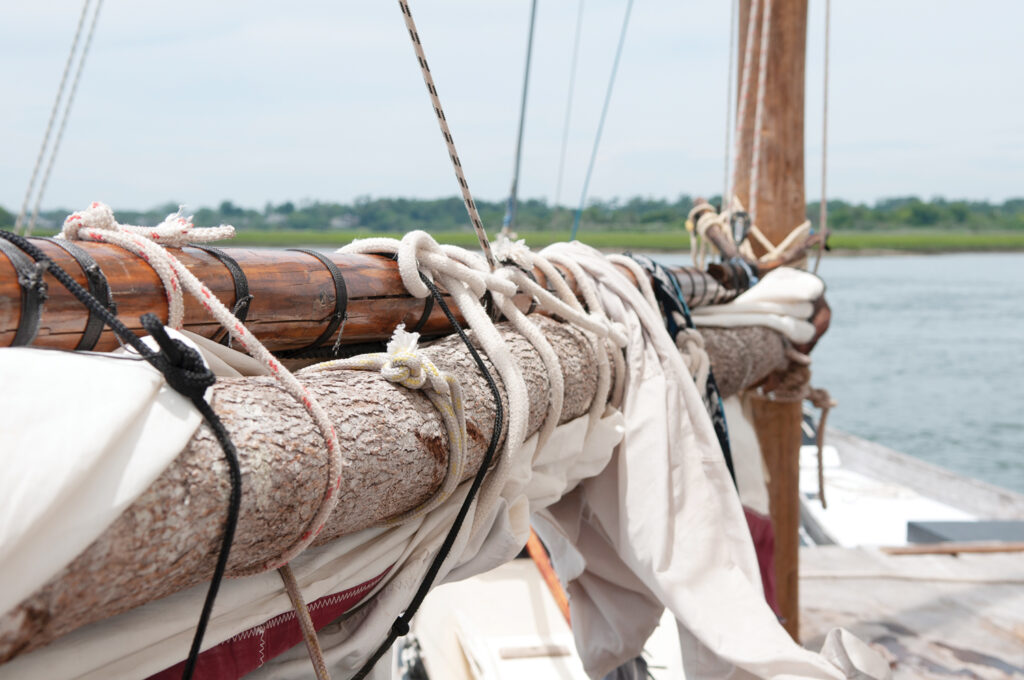
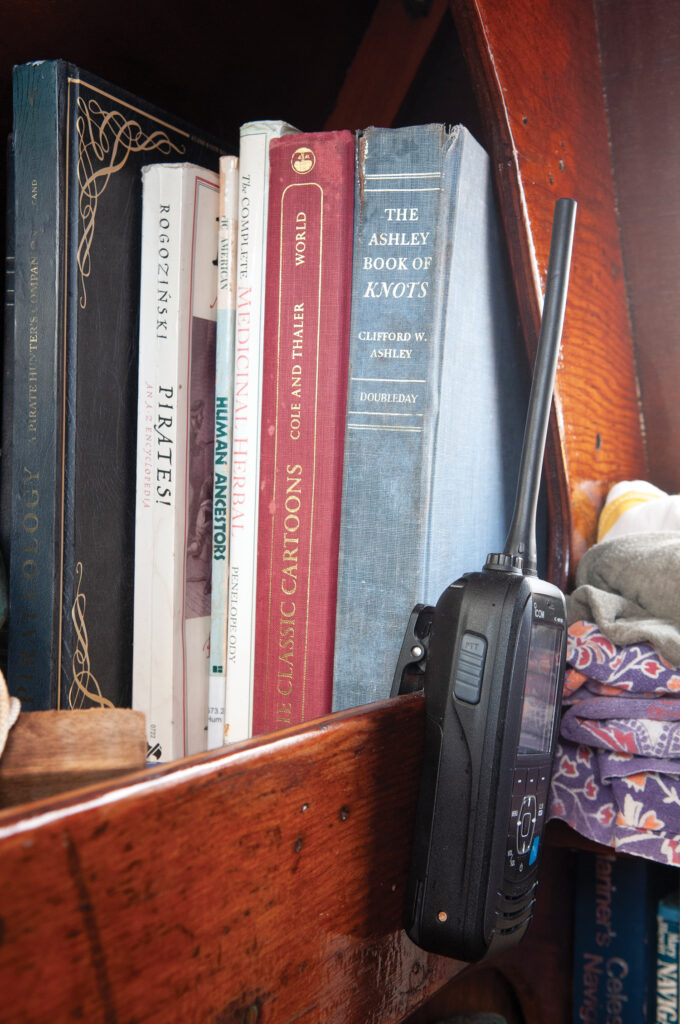
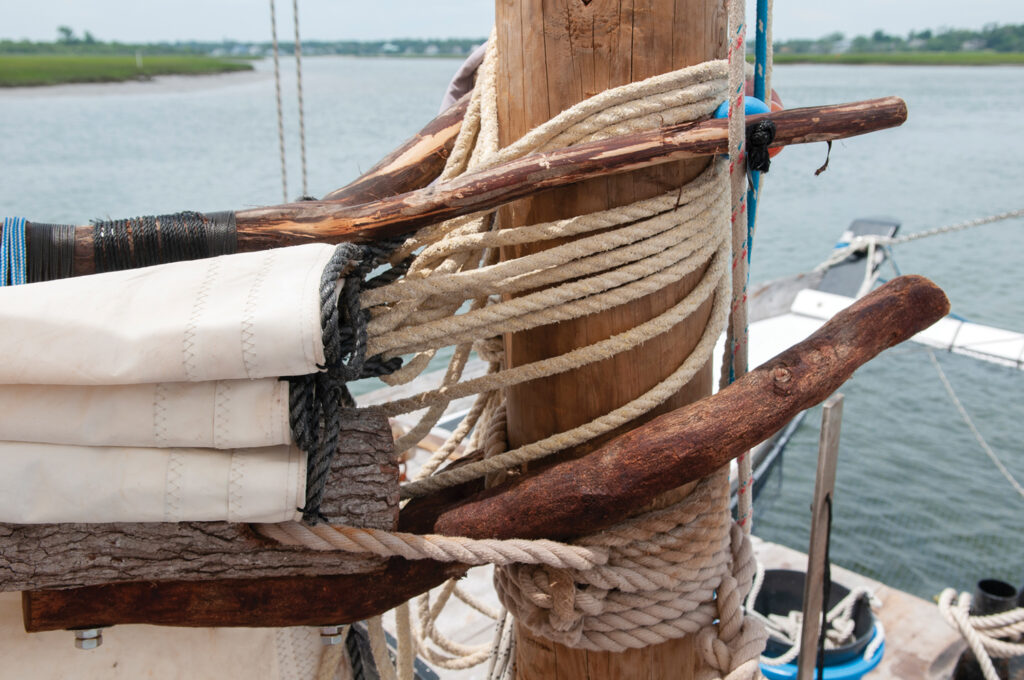
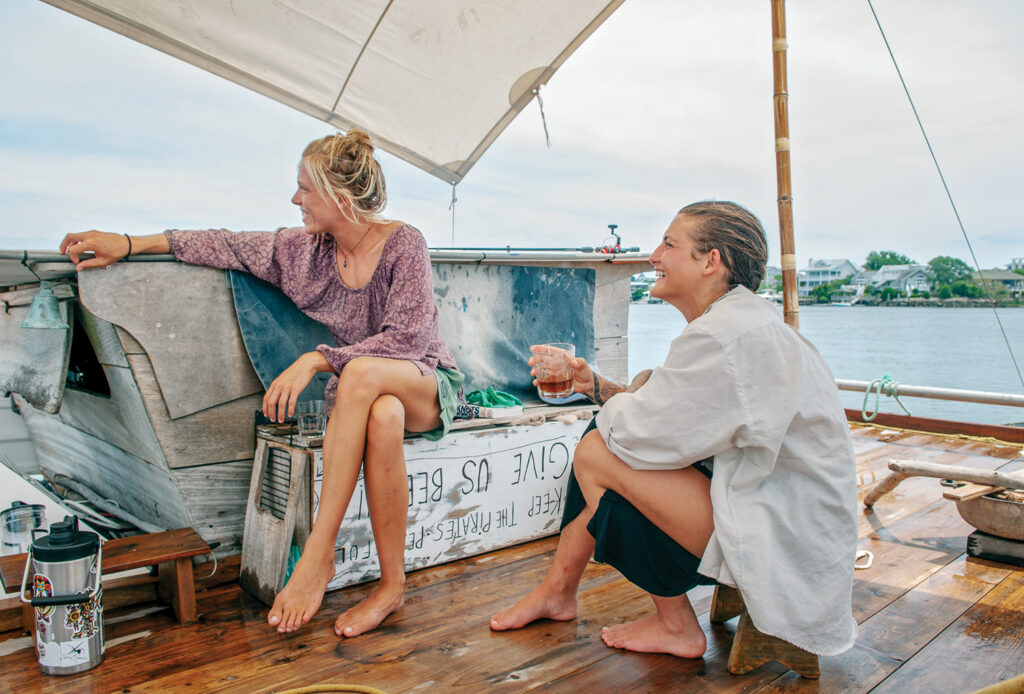
WBM: How do you navigate?
KW: I use my iPhone’s GPS primarily. I also have a handheld Garmin GPS (Foretrex 101). It spits out coordinates and tells you how fast you’re moving. That’s my backup. Twice a day I plot my course on a paper chart. I keep specific coordinates in a log four times a day. My wind speed, my direction. I also record how the boat’s performing, what birds I see, what dolphins, what boats. I am learning the sextant. I am learning the stars. I know the Atlantic; you can only go so far east and west. I can use dead reckoning if I had to.
WBM: What’s the worst thing that has happened?
KW: I lost my mast crossing the Atlantic in 2019. It was at sunset, day seven. It was a stupid accident. Before the Portuguese telephone pole for a mast, it was a radio tower crossed galvanized steel pole, and it came crashing down onto the doghouse. For three days we had no wind. We were 350 miles southeast of Bermuda, going in tandem with Hans, just enough to see each other at times. It was my first crossing. When this happened, the weather was pretty rough. He rowed over and helped me clean up. In the morning it calmed down. Hans told me I could abandon the boat, he could tow me, or I could just jury-rig and sail it to Portugal. I sailed in one day after him.
WBM: You said you prefer to sail by yourself, what do you enjoy about being alone on the ocean?
KW: It’s magical. It’s the most wonderful feeling in the world. I call it passive adrenaline, it’s just you and this boat.
WBM: You’re offshore between continents, for close to 30 days at a time. What foods do you crave?
KW: I crave anything that does not taste like my cooking. By the fourth week, I’m starting to open up a can or two. I haven’t been buying snacks, so in the middle of the ocean no snacks, no chocolate. When I’m in that state, I make chocolate pancakes with honey.
WBM: Do you have any setting sail ritual?
KW: I make sure to have a big pot of soup in case I get seasick. I always have a big pot of food. I try to leave in the morning. I’m trying to leave when I see dolphins. All around the world you see dolphins, different kinds of dolphins. If I am going dead downwind there will be waves and the dolphins will surf in it for hours.
WBM: Do you get seasick?
KW: The first time I went sailing I was sick for four days. After that if I hadn’t been sailing for a few days, I would. I try to have a full stomach.
WBM: What inspired you to do this?
KW: This living on the water is economical. Most people pay a lot of money to have their boat. I met a man who could do so much with so little, he could fix his boat with trash, literally trash. I want to travel. I like my sanctuary. The wind is free.
WBM: What is a favorite thing most people have not seen?
KW: The bioluminescence at night, and the stars reflected in the water.
WBM: What is the favorite place you have been?
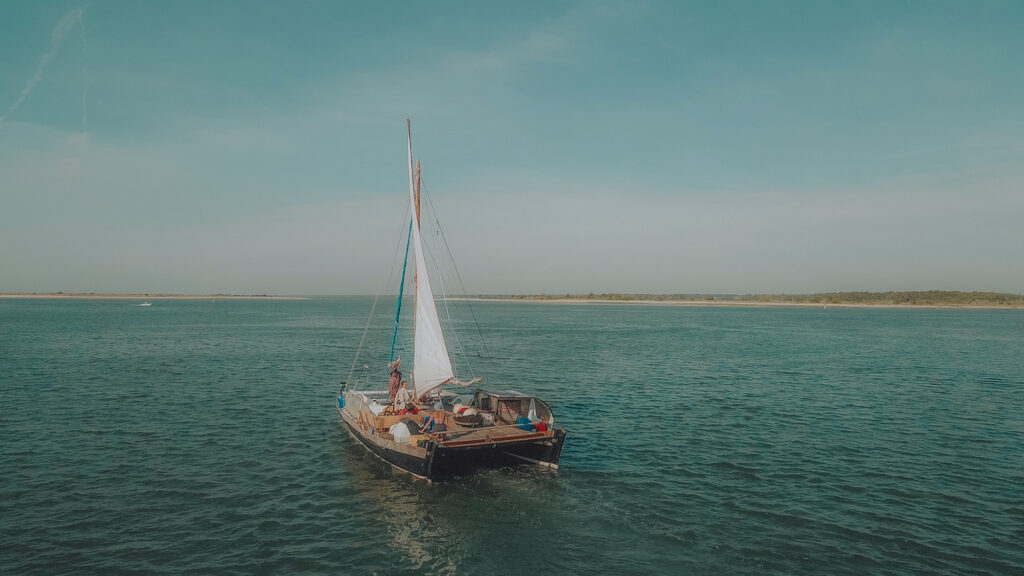
KW: Right now, here, Wrightsville Beach. This is one of the most beautiful places I have been, and the people are so friendly. But other than that, Haiti maybe. I was there for two months. The people are amazing. They have no gas, no food, no water, and they are happy and every day they’re on the beach, in the water.
WBM: Have you ever gotten sick during a sail?
KW: No. There’s no option, there’s no getting sick, no getting hurt.
WBM: Have you had pets on board?
KW: Not on the boat. There was Chicken One and Chicken Two. One lasted half a year. Dinner is the goal. I need to get another one.
WBM: What about safety?
KW: A big mean dog would be good. If you have a dog on board, you are so much safer. In Brazil the people were extremely afraid of dogs.
WBM: This trip when you sail away from America, what is your destination?
KW: Portugal, the Azores. The principal purpose of this project, Women in the Wind, crossing the North Atlantic, is not just to show you can, or pay homage to the boat, or what a woman can do. I want to use that momentum to plant a little seed. A lot of what we want to do is to show the treacherousness of this plastic we use every single day. The first time I crossed the Atlantic I saw trash every single day. The ocean is our life source, our oxygen. Without our reefs, our oceans, we can’t live here. We’re taught about plants, the rainforest, but we are not taught about the ocean and what it does for us.
WBM: What’s next after Portugal?
KW: I need to get to Brazil this year. I’ll be leaving for the Cape Verdes [between 320 and 460 nautical miles west of continental Africa] in November 2022.
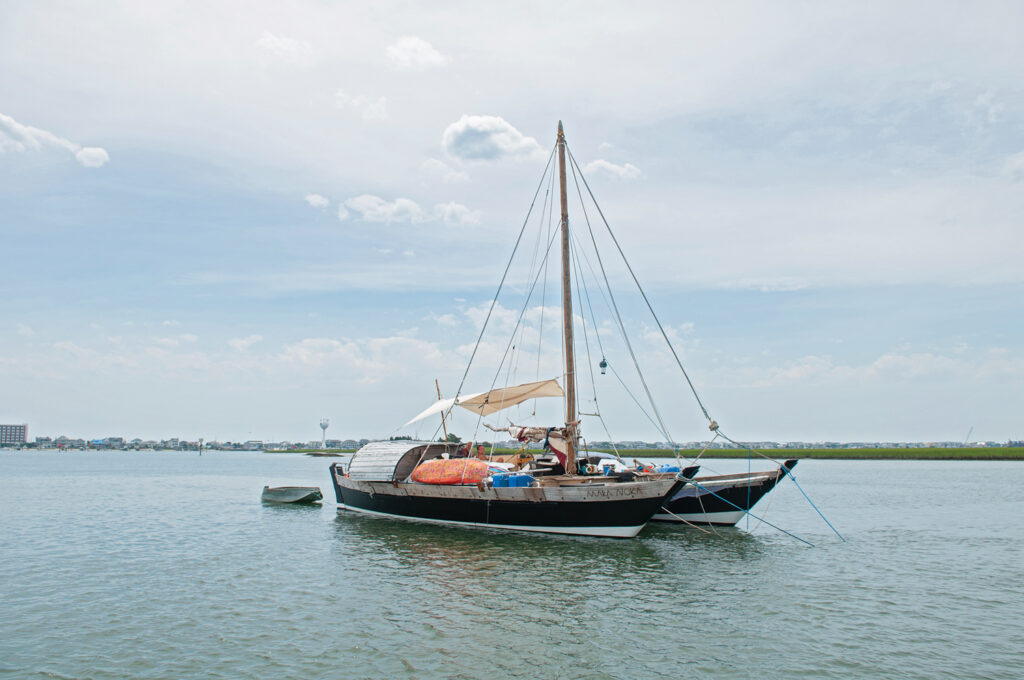
The Mara Noka
LOA: 41’
Beam: 19’
Draft: 3’
Speeds: 7.5 to 8 kn on a broad reach. 7.5 kn straight into the wind. Downwind average 5 kn.
Rig: A Portuguese telephone pole mast, a hand-carved gaff spar that originally was a boom on an Azorean whaling boat, and a 33’ tree branch as a boom.
Fuel: 20 gallons in jugs on deck
Water: 120 gallons in jugs on deck
Main anchor: Bruce 30KG
Power: a 25hp Johnson outboard (not used at sea, taken up 5 miles out.)
Rowing dingy: 8’ folding Banana Booat ®
Rowing dingy: 6’ handbuilt child’s dory
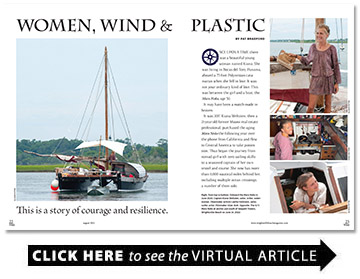
Love your sailing video. Need more. Have a small boat myself but don’t sail it as much lately due to age and heart issues. Have a friend that writes books and is an english professor at the local university. He’s writing a book about sailing women and would like to interview you. He will be back from Africa in a few days. If you got this way I (or we) would love to buy you a dinner and hear your stories. We are located in the Houston area of USA. Lots of cheap boat slips in our area but not a real scenic coast. Just let me know.